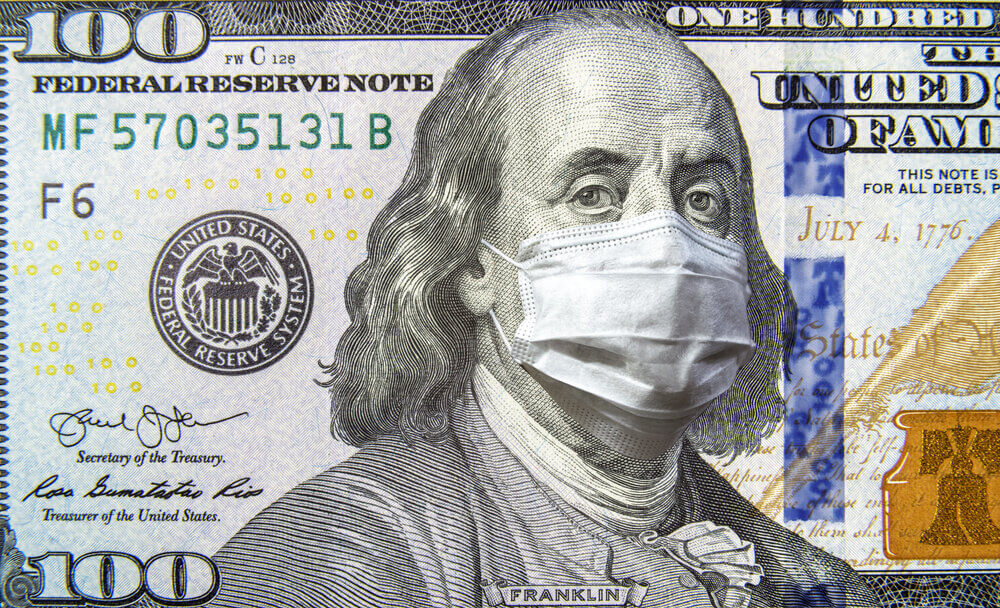Boeing’s 737 Max issues highlighted the company’s sacrifice of safety for financial performance, resulting in a tarnished reputation. The prioritization of profit over core values also damaged the FAA’s credibility and revealed a lack of accountability for top executives. This downfall serves as a reminder of the importance of maintaining core values and prioritizing them over short-term financial gains.

Are We At the Top?
The stock market has corrected some, but things are still frothy in the financial world. Unfortunately, when things are frothy, the economic forces of gravity come into play at some point, and the pain ensures. Why do I think things are at the top?
I believe t is several things. First, the Fed has flooded the economy with funds through the CARES Act, the Main Street Lending Program, to name a few. The money has to go somewhere, and there is FOMO – Fear of Missing Out – so everyone is piling into the leading tech stocks. Further evidence is:
1. Junk bond debt issues, as shown above. The demand for yield is high as government debt, and AAA debt is offering such low yields. Thus record amounts of questionable paper have been issued to meet this demand.
2. SPACs. Look no further. Everyone and their dog is jumping into the SPAC space. These blank-check companies have raised about $41 billion, year to date, which is more than the last ten years combined, and Since July 1, about $29 billion. Currently, I understand that over 40 SPACs are looking for merger partners. As I have mentioned before, SPACs tend to overpay, reducing the returns for investors. Given that there are so many buyers right now, we can expect the prices of merger partners to rise and the quality to fall. Of course, the people who make the real money buy the founders’ shares and get the “promote.” Take the case of Alec Gores, who put just $25,000 into his SPAC when went public in January. Once their acquisition is closed, their 0.6% stake will be worth $96 million. Not bad work if you can get it. However, if the founders are doing so well, my advice is to stay away. The SEC is concerned that investors don’t understand how the incentives relate to pay in a $PAC compared to a traditional IPO. There may be regulation.
3. Is Palantir the latest WeWork? According to the Wall Street Journal, bankers have told investors that shares may start trading at $10, valuing Palantir at almost $22 billion when it goes public through a direct listing on September 30. Valued at $20 billion in 2015, Palantir has seen some increase in value. However, in the private markets, it is trading below $20 billion, and this month PitchBook valued Palantir at just $8.8 billion. As I mentioned last week, Scott Galloway in PalanThiel: The Uncola pointed out that “But at 17 years of age, and after raising $3 billion, the ‘start-up’ has never made money. In 2019, Palantir lost $580 million on approximately $740 million in revenues. The idiot client they serve (U.S. government) lost 25 cents on the dollar ($1 trillion deficit vs. $3.5 trillion in revenues) in 2019 vs. 78 cents at Palantir. The firm spent $911 million in marketing over the last 24 months, roughly half of what Tide detergent spent over the same period. The firm has 125 clients, 3 of them accounting for 28% of revenues. Palantir feels more like a services firm, with tech at its core (e.g., Accenture), but one that, unlike a services firm, is massively unprofitable.” Driving all that success if CEO Alexandar Karp, who paid himself $12 million. If the market is valuing this at $20 billion, we must be close to the top!
The Housing Market
For those that haven’t noticed, the housing market is booming. Many of us stuck inside have realized that we don’t like our homes are moving. In August, new-home sales increased at the fastest rate since 2006. All this demand is causing a supply and demand problem driving up prices.
However, not for long. As I predicted in April, many people are straining to pay their mortgages. Industry analyst Keith Jurow expects “several million” people will have gone nine months without making a payment when the Federal Housing Finance Agency’s foreclosure and eviction moratorium expires at the end of the year. In July, 17% of FHA-insured mortgages were delinquent, according to the Department of Housing and Urban Development. In NYC, 27.2% of mortgages were delinquent in July.
With so much new supply coming online soon, prices may drop, and those that bought now may find they purchased at the top.
Recent Posts
The Downfall of Boeing: A Lesson in Core Values
Resolutions, Here We Go Again.
In reflecting on 2021 resolutions, the author scored themselves in three categories and sought to improve success in 2022 by addressing friction points. Drawing on advice from social psychologist Wendy Wood, the author identified areas to reduce or increase friction in their failed resolutions. By making these adjustments, the author aims to enhance their goal achievement and encourages others to consider friction when setting resolutions.
You need to take an extended vacation. No, seriously, you do.
COVID has taken a toll on all of us. If you have not taken an extended vacation in a while where you disconnect, you need to now. You and your business will benefit.
Becoming Famous in Your Niche: The Success Story of Linn Products Limited
In a previous discussion, I highlighted the importance of being famous for something. Being well-known in your niche can help you: Concentrate on your strengths Connect with your target audience Communicate your offerings more effectively Receive referrals Identify...
Understanding and Optimizing Your Cash Conversion Cycle
Understanding and optimizing the Cash Conversion Cycle is crucial for business growth, as it impacts cash flow and the ability to access external capital. This cycle consists of four components: Sales, Make/Production & Inventory, Delivery, and Billing and Payments. To improve the Cash Conversion Cycle, companies can eliminate mistakes, shorten cycle times, and revamp their business models.
Discovering Your Niche: Why You Need to Be Famous for Something
As an entrepreneur, it’s crucial to specialize in a specific area and become famous for something, allowing you to generate referrals and build your brand. Understanding the “job” you’re hired for helps you stand out in the marketplace and communicate your value proposition effectively. By providing value to your clients, you can adopt a value-based pricing approach, ensuring your business remains competitive and maintains a strong market presence.
Rethinking Your Pricing Model: Maximizing Margins and Providing Value
Rethink your pricing model by focusing on the value you provide and your customers’ Best Alternative To a Negotiated Agreement (BATNA). This approach can help you maximize margins while delivering better value to your clients. Assess your offerings and brainstorm with your team to identify pricing adjustment opportunities or eliminate commodity products or services.
Do you know your Profit per X to drive dramatic growth?
I recently facilitated a workshop with several CEOs where we worked on the dramatic business growth model components. One of the questions that I had asked them beforehand was, "What is Your Profit/X?" The results showed that there this concept is not clear to many....
The War for Talent: 5 Ways to Attract the Best Employees
In today’s War for Talent, attracting the best employees requires a focus on value creation, core customer, brand promise, and value delivery. Clearly articulate your company’s mission, identify your “core employee” based on shared values, and offer more than just a salary to stand out as an employer. Utilize employee satisfaction metrics and showcase your company’s commitment to its workforce on your website to make a strong impression on potential candidates.
Are you killing your firm’s WFH productivity?
Productivity remained during WFH with COVID. However, further analysis found that hourly productivity fell and was compensated for by employees working more hours. What was the culprit – Meetings. Want to increase productivity, have fewer meetings.














